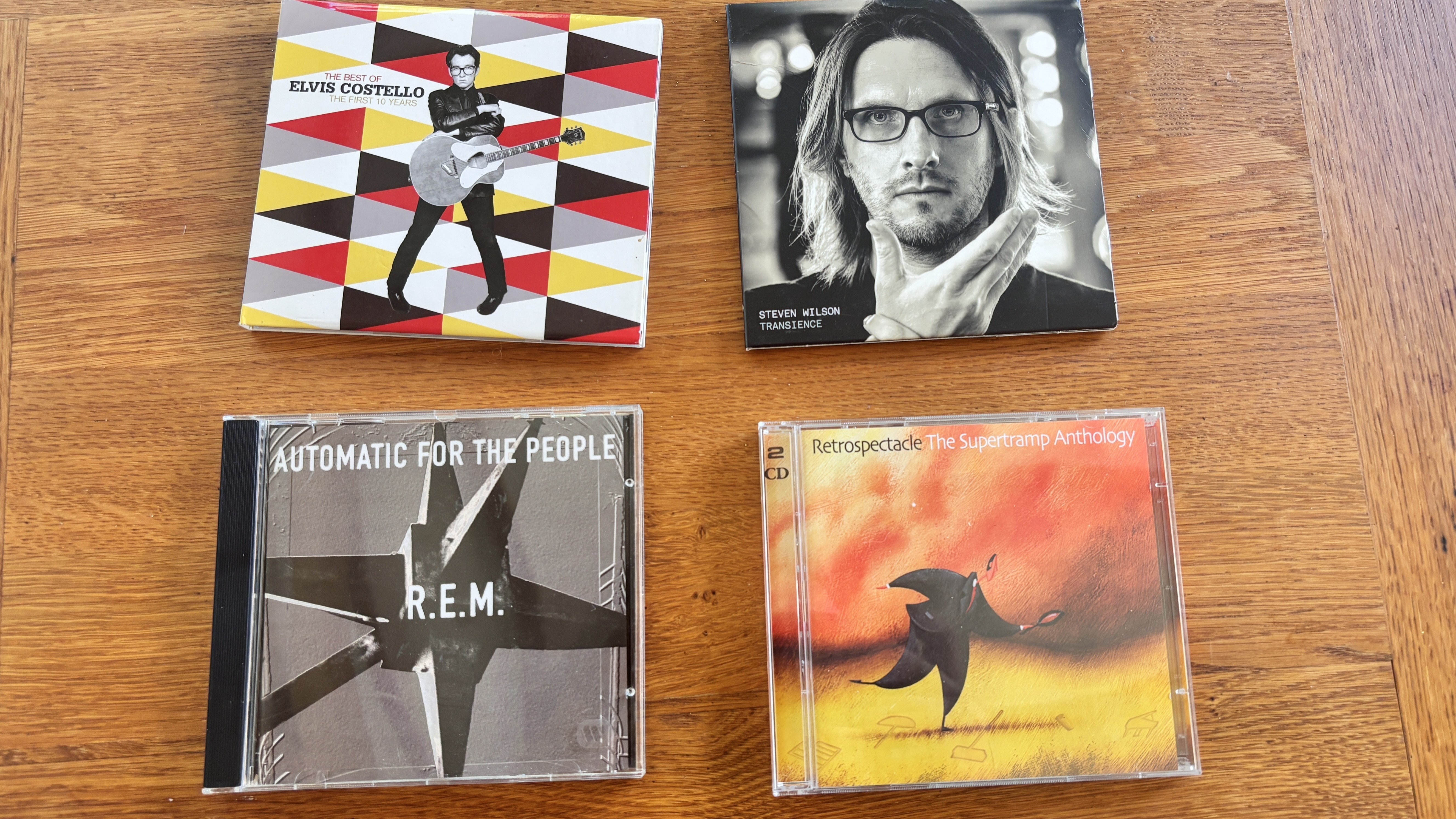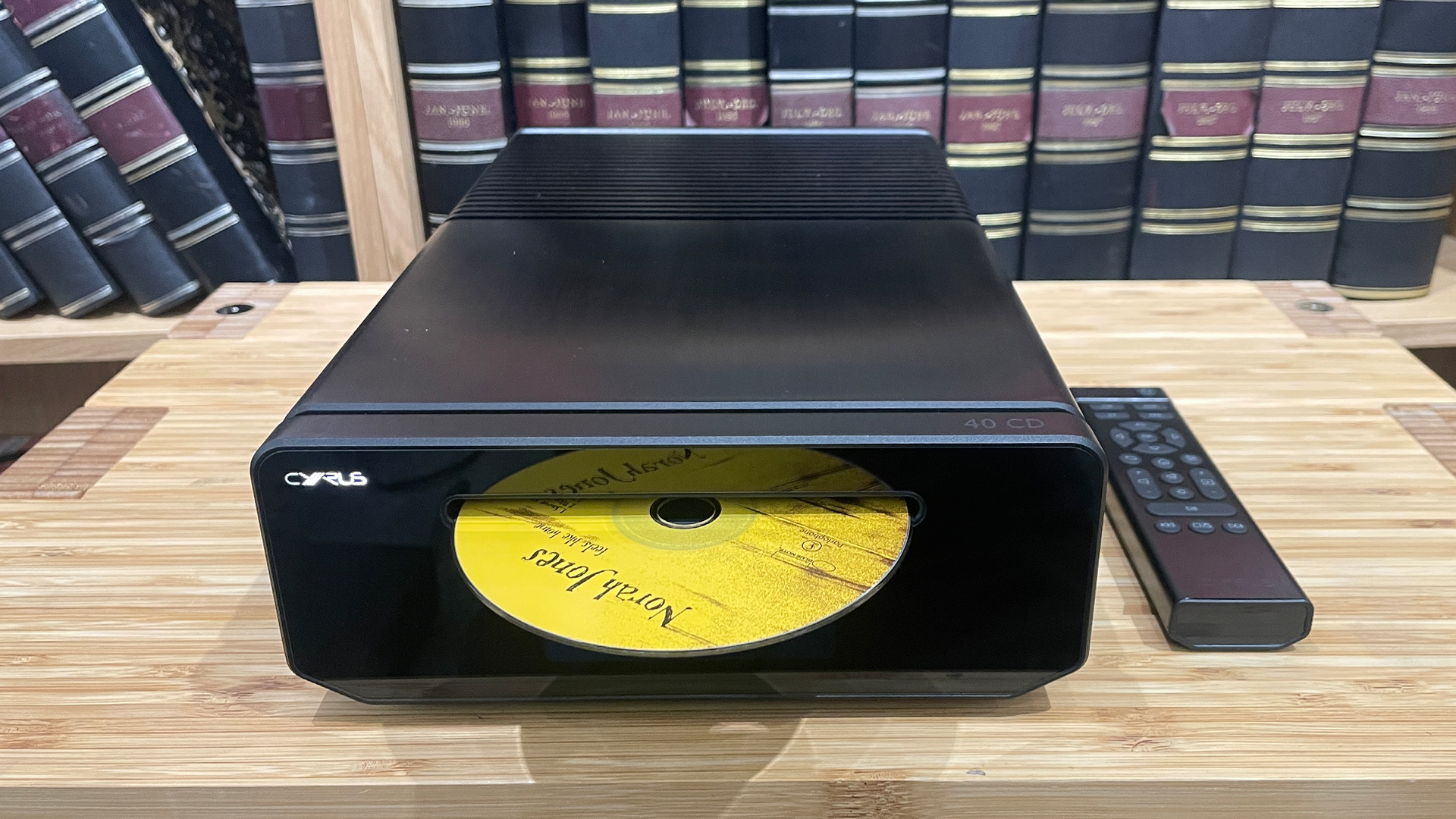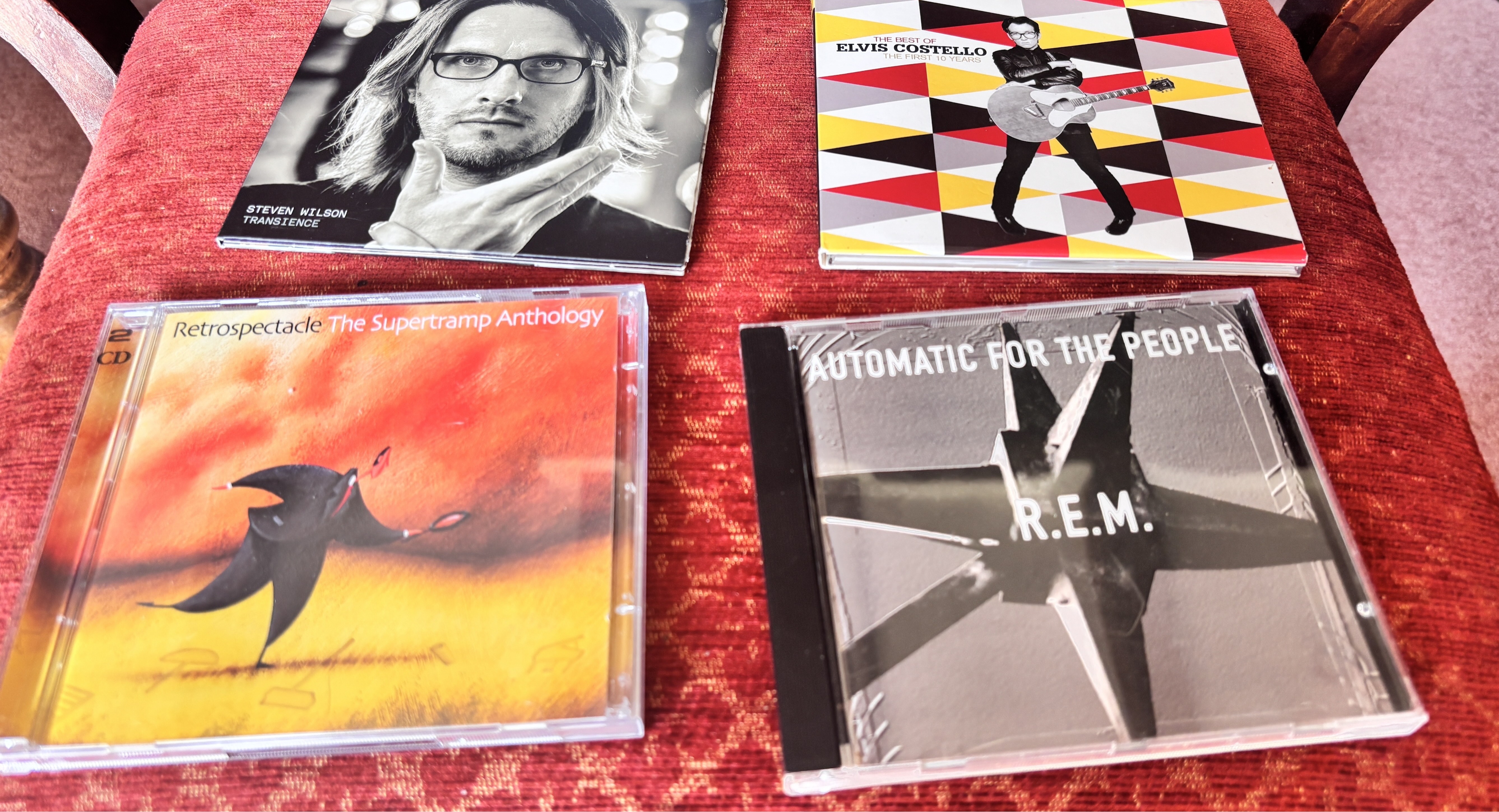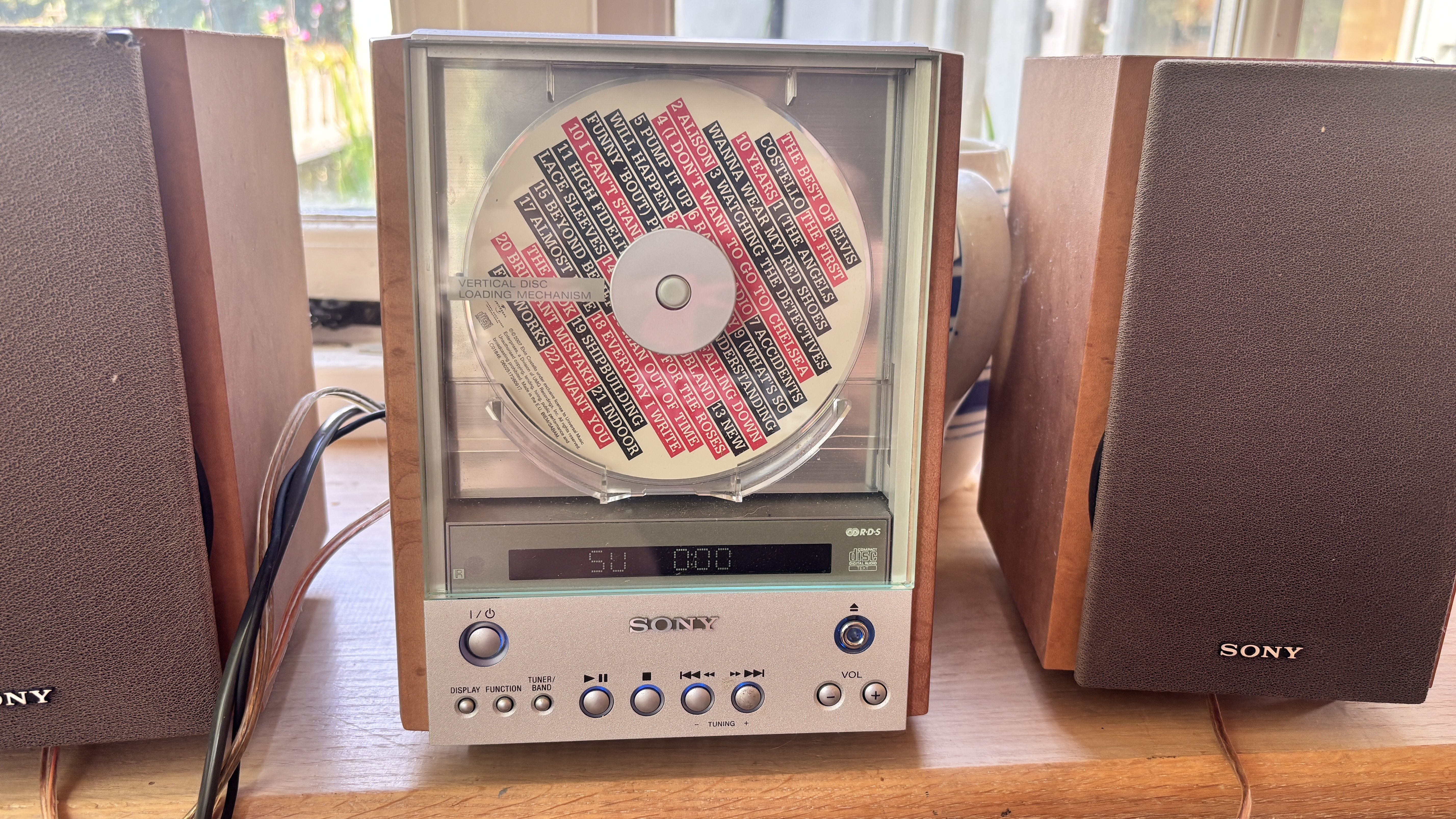Buying second-hand CDs is my favourite way of discovering new music sustainably
CD doesn't have to stand for 'Climate Damage'

Haven’t you heard? CDs are back! They’re not quite enjoying the same renaissance as vinyl, and they still haven’t managed to gain the quirky hipster cachet of cassettes, but the dear old compact disc is once again seeing a resurgence as certain corners of the consumer market turn their attention back towards physical media. Hooray!
This is, broadly, a positive thing, especially for an old chunk of coal such as myself who used compact discs as their primary source of musical enjoyment. First, you’d just have to listen to your CD on a CD player (odd, that), but then came iTunes and the chance to rip your discs into a digital format and have them forever preserved on your computer library or portable iPod. What a time that was. What. A. Time.
CDs may have gone out of fashion in the intervening years since online streaming completely took over, but I never quite lost the love of having a proper physical collection.
Shamefully, I only own one vinyl record (cue the comments), but I do have a reasonably healthy stock of fragile plastic cases to be spun or just admired from afar. There’s even a few knocking around our test rooms. Weezer’s Green Album, anyone?
A sustainable choice?

It was thanks to What Hi-Fi?’s inaugural Sustainability Week that I began thinking about my collection once again, and in particular the means by which I’ve gone about amassing it.
My preferred methodology has always been delving into charity shops – it’s cheaper and you’re helping good causes – but is that an environmentally sustainable way of getting music, especially when contrasted with other physical and non-physical alternatives?
In general, yes, but there are caveats. CDs are generally considered to be a less environmentally damaging format than vinyl, a format which often comes under fire for its inefficient and damaging processes.
The latest hi-fi, home cinema and tech news, reviews, buying advice and deals, direct to your inbox.
According to the Vinyl Alliance, making a PVC record can put out around 1-1.14kg of carbon dioxide into the atmosphere, while a CD will, per Julie’s Bicycle, generally put out around 0.2 to 0.6kg depending on factors such as packaging and size.
This does make sense. PVC resin production and the processes involved in making vinyl, including a greater size and even more associated packaging, make it environmentally challenging.
CDs are smaller, with most of the damage coming from production of polycarbonate and aluminium, not to mention the plastic cases themselves. Cardboard cases are far superior, as we all know…
Buying second hand only decreases the potential environmental impact of CDs – by the most basic logic, second-hand purchases negate the need to purchase a brand new item.
It’s not quite as simple as all that, as sometimes you may be buying a product that you wouldn’t have bought first-hand anyway, and transportation costs need to be factored in, but generally, second-hand is best. If not best, then certainly better.
Just make sure that you intend to keep what you buy, as simply chucking it away negates your positive impact somewhat. I’m planning on keeping my collection for the rest of my days, and once they’re done with, passing them on, donating them or even repurposing them for other uses.
Buying CDs second-hand does help front-end damage, but it’s important to factor in the eventual cost of their end-of-life impact. Polycarbonate doesn’t biodegrade for a long while, so most CDs and DVDs end up in landfill – you want to do everything you can to stop that from happening.
Fun for the whole family

If you do manage to get those environmental factors in place, there’s another great reason to go second-hand CD shopping: it’s fun! Quite aside from the good you’re doing helping out the charity section – my local CD store helps a local hospice – charity shops are a great way to find hidden treasures and, more importantly, expose yourself to new music.
Yes, you have the soulless Spotify algorithm to help curate music for you, but after a while, it will just throw up the same tired suggestions with little thought or care. Spotify is obsessed with getting me into Queens Of The Stone Age thanks to my love of ‘90s grunge and post-grunge. I’m just not having it.
Buying a CD is a different beast. First, you’re investing proper money, so there’s an incentive to get something good and to listen to it at its fullest. Second, if you have a decent player, you’re getting solid quality music that outstrips that which Spotify streaming can manage (16-bit/44.1kHz). Third, you’re interacting with people who actually like music.
My most recent purchase – last week, I snapped up Steven Wilson’s Transience – came about from being recommended the compilation by a staff member enquiring if I was into prog. Why not, I thought. I certainly need to get more into prog. It’s a pretty good album, too, albeit slightly tricky to get into upon first listen.
You then have the pleasure of expanding your collection, of watching your stock grow in real, genuine three dimensional space. That’s a feeling that streaming libraries can’t emulate, partly because they live solely online and partly because you never really ‘own’ your Tidal or Spotify collection. It’s just not the same.
Who's a lucky boy, then?

It’s also a great benefit that I have access to some serious gear on which to test my CDs. It wasn’t long ago that I was spinning one of my favourite albums, Soundgarden’s Down On The Upside, on the exceptionally talented Cyrus 40 CD.
That’s a wonderful piece of kit, and besides the great sound it makes, the whole ritual of using both the physical disc, the Cyrus itself and our reference system, is something that iPhone-based Tidal streaming can’t touch. If you’ve got a CD collection, you’ve opened up another product category to enjoy, with a host of potential candidates serving up various spins (pun intended) on that crisp ‘CD sound’.
I’ve got a few new discs that are prime candidates for the test room. We’ve always got some pretty talented CD players knocking around (and who knows, a new one may be around the corner), so it’ll be exciting to see what Supertramp’s Retrospectacle anthology sounds like when I have a few spare moments.
And if I'm not in our test rooms, any excuse to break out my family's twenty-year-old (at least) Sony CMT-EX1 player is more than welcome. Seriously, unless you've used one, you'll never know how satisfying it is to load a CD into that vertical disc tray and watch it spin through the unit's vertical transparent frontage. Amazing.
Done right, second-hand CD collecting is the perfect way to expand your musical horizons, both in terms of music and the products you’ll use, all while keeping one eye on sustainability and your own musical footprint.
Plus, you get the added benefit of experiencing physical media in all its glories, enjoying those rituals and routines – not to mention potentially superior sound – that you just don't get with digital files.
It’s always worth doing your own due diligence on any products you make or stores you patronise, but as an alternative to brand-new and throwaway purchases, second-hand CD shopping shows that sustainability and sonic satisfaction can live happily side by side.
MORE:
Welcome to What Hi-Fi?’s inaugural Sustainability Week!
Best CD players: budget to premium options tested by expert reviewers
The 10 most valuable vinyl records sold on Discogs last July

Harry McKerrell is a senior staff writer at What Hi-Fi?. During his time at the publication, he has written countless news stories alongside features, advice and reviews of products ranging from floorstanding speakers and music streamers to over-ear headphones, wireless earbuds and portable DACs. He has covered launches from hi-fi and consumer tech brands, and major industry events including IFA, High End Munich and, of course, the Bristol Hi-Fi Show. When not at work he can be found playing hockey, practising the piano or trying to pet strangers' dogs.
You must confirm your public display name before commenting
Please logout and then login again, you will then be prompted to enter your display name.
